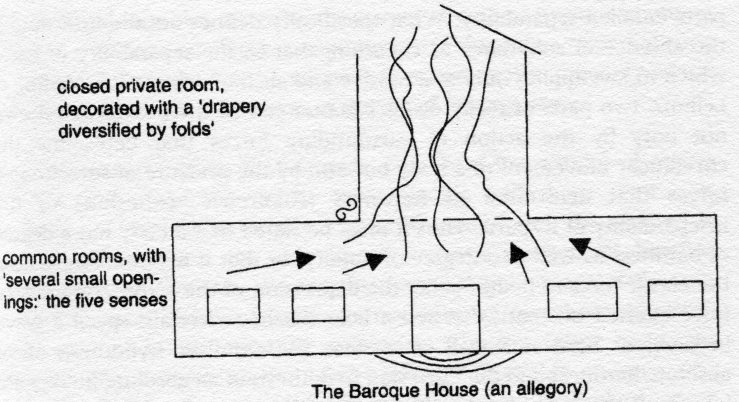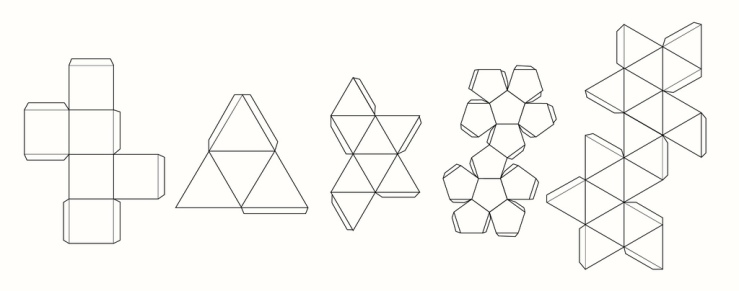
For Deleuze, the fold is a metaphor that allows us to conceptualize the production of human subjectivity, through the connection between the soul and the body (or the virtual and the physical.) In the first two chapters of The Fold, Deleuze defines the Baroque as a principle or function of producing endless folds, that twist and turn to infinity. The two infinities that the Baroque fold unfurls are that of matter and soul. To explain this, Deleuze uses Leibniz as the “cryptographer” who can account for matter and decipher the soul, thereby connecting the two levels of the Baroque house.
The case for this connection between the lower and the upper levels is the fold- the smallest unit of matter. For Deleuze, the soul is simply matter than has been complexly folded into itself to create an interior (in this sense, the entire world is contained within the folds of the soul.) In the first chapter, Deleuze explains how Leibniz rejects Descartes’ dualism, or the understanding that matter can be broken down into parts of parts. Leibniz’s model for sciences of matter is the Japanese art of paper folding: origami. And in this system, to unfold is to grow and to fold is to reduce.
Folding/unfolding = enveloping/developing = involution/evolution
Some thoughts:
- I like the subtle differentiation between “pleats” of matter and “folds” of the soul- sort of denoting the more permanent or concrete nature of matter, as opposed to the more abstract, fluid nature of the mind.
- I find it interesting how Deleuze uses folding to make an argument for preformism and duplication. The organism as double is seen through the metamorphosis of organisms (the butterfly is simply folded into the caterpillar.) In this sense, preformism and epigenesis could share a connection, in that preformism operates under the notion of potential. “The living organism … by virtue of preformation has an internal destiny that makes it move from fold to fold.”
- Deleuze refers to a localization of the soul in the body as a projection from the top to the bottom that focalizes on a “point” of the body. This projected relation between the upper and lower floors of the Baroque house remind me of the camera obscura, as information from the exterior is projected onto the walls of the interior, creating a distorted view of the world. For Deleuze, only humans have a soul-body interaction, through “analogy with the mind.” As for inorganic matter, their souls exist higher up and are only projected upon them.
- Basically, Deleuze has taken Leibnizian concepts and laid them out as a framework for the connection between the virtual and the physical, mind and matter, interior and exterior. The way that Deleuze speaks of matter as a series of infinitely, enveloped folds has clear parallels to the realm of digital fabrication. As a direct correlation, for one, I think of the fundamental building blocks that we use in cad programs: the point, the curve, the plane. I think of the translation of physical form to polygonal facets through the process of scanning objects and photogrammetry. I think of the action of “unrolling” (or unfolding) forms on the screen to reveal their construction. In this sense, the fold acts as a metaphor for divisions that also act as connections, and for the coexistence of both multiplicity and oneness (specifically at the end of chapter 2 when he begins to speak about monads as a state of One, a unity that envelops a multiplicity.) The monad allows the singular to exist within the series and to actually convey the entire world by way of its individual POV. This concept of the singularity/point of focus within a system of infinite variation is one that we have seen in digital spaces like that of grasshopper. The way Deleuze speaks of the point of inflection as an “intrinsic singularity” that does not refer to Cartesian coordinates again recalls a connection between the virtual and the actual. Inflection as a point that exists between dimensions, as something that will happen, but is not yet in the world- “rather it is the beginning of the world”… therefore, there will always be an inflection that creates a fold from variation, bringing the fold to infinity.
